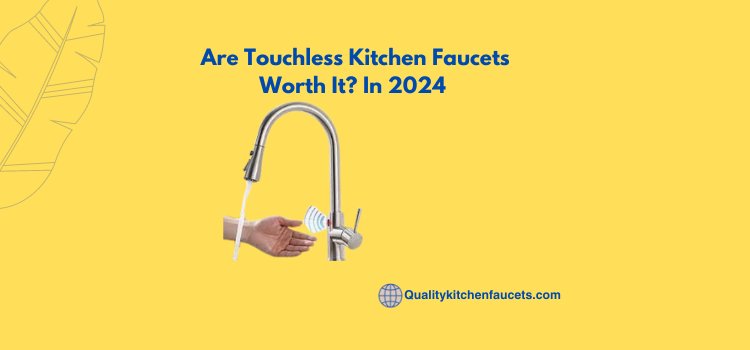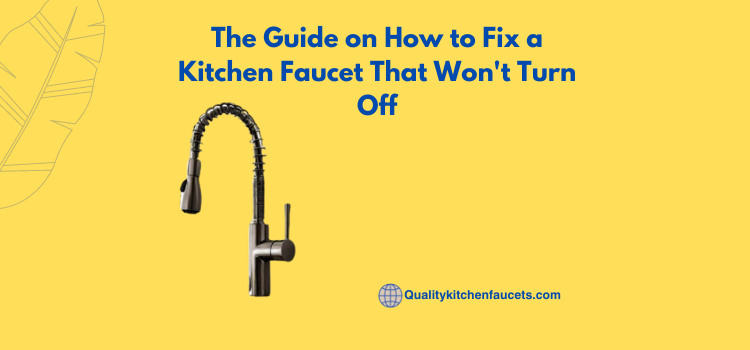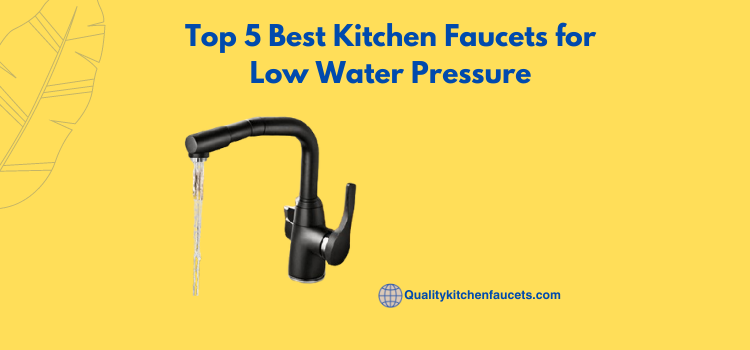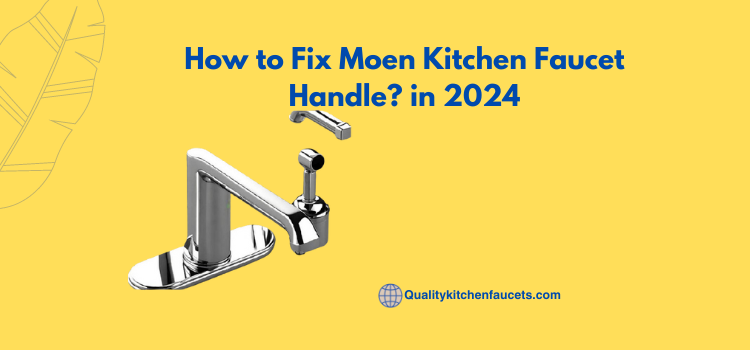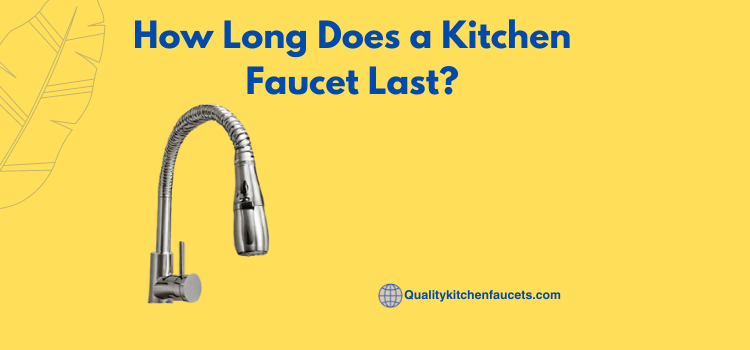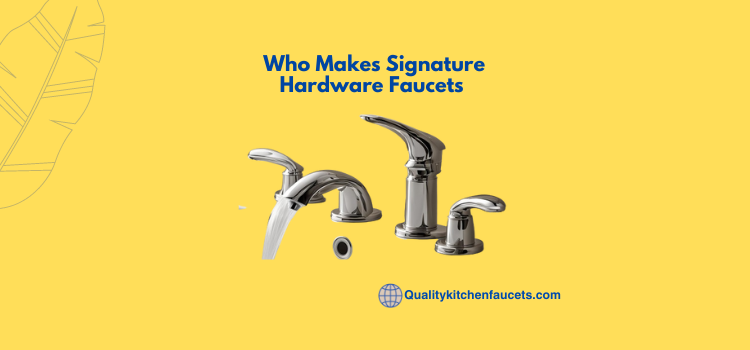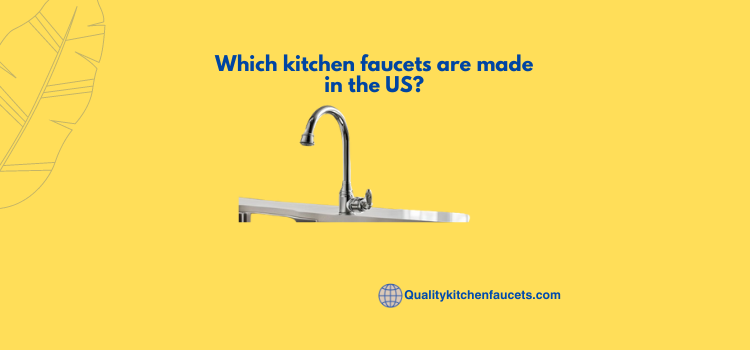Are Touchless Kitchen Faucets Worth It? In 2024
In the modern era, where hygiene and convenience are paramount, the question of whether to invest in are touchless kitchen faucets worth it? in 2024 becomes increasingly pertinent.
Despite their ubiquity, traditional water tap pose several issues, including the spread of germs and the inconvenience of handling with dirty or whole hands. The daily struggle with manual faucets, from lever adjustments to cleaning, highlights a gap in the kitchen experience—a need for a seamless, hygienic solution.
Enter touchless kitchen faucets—a technological marvel designed to address these concerns. By allowing users to activate water flow without physical contact, they significantly reduce the spread of bacteria and offer unparalleled convenience during culinary tasks. Adopting touchless technology in the kitchen streamlines the cooking and cleaning process and elevates hygiene practices to a new standard.
This article dives deep into the value proposition of touchless kitchen faucets. By examining their benefits, drawbacks, and overall impact on daily kitchen operations, we aim to provide comprehensive insights that will assist you in making an informed decision. Whether you’re renovating your kitchen or simply looking to enhance your culinary space, join us as we explore the potential of touchless kitchen technology in transforming your home environment.
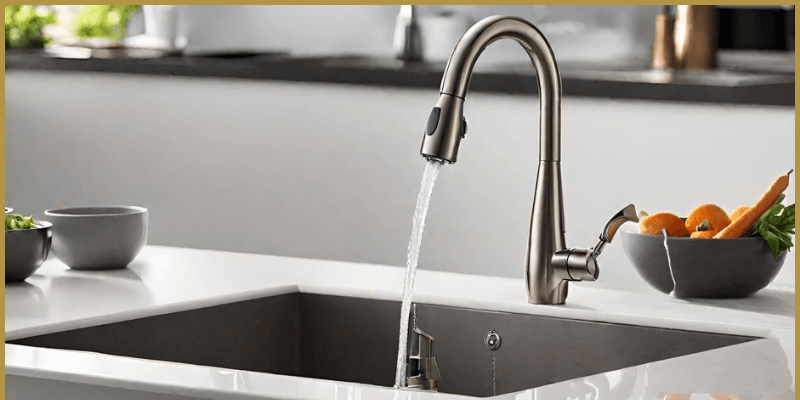
Are Touchless Kitchen Faucets Worth It? 9 Steps In 2024
To Determine if an automatic kitchen faucet is Right for You
Step1. Assess Your Hygiene Requirements
Consider how a touchless water outlet could improve sanitary conditions in your kitchen, especially if you cook frequently or have small children.
Step2. Evaluate Your Kitchen’s Usage
Think about how often and in what ways your kitchen sink is used. High traffic and multifunctional use can increase the value of a contactless faucet.
Step3. Consider the Cost
Research the price range of touchless kitchen faucets and analyze whether the investment aligns with your budget and is justified by the benefits.
Step3. Look into Installation Requirements
Some automatic faucets may require professional installation or specific sink specifications. Ensure your kitchen meets these requirements or can be adapted.
Step4. Test Different Models
Visit stores to test various models for responsiveness and ease of use. This can help you find the most user-friendly valve.
Step5. Read Consumer
probe faucets in their homes to understand potential pros and cons.
Step6. Check for Energy Efficiency
Investigate how much energy the touchless technology uses and consider models designed to conserve water and power.
Step7. Examine Design and Aesthetic Fit
Ensure the faucet’s design complements your kitchen’s style. Detector faucets come in various finishes and designs.
Step8. Understand the Warranty
Before making a purchase, familiarize yourself with the warranty offered. A good warranty can provide peace of mind and protection against defects.
Step9. Plan for Future Maintenance
Knowing how to troubleshoot common issues can also be beneficial.
By meticulously following these steps, you can make a well-informed decision about whether a touchless kitchen spout, tailored to your needs and lifestyle, is a worthwhile addition to your home in 2024.
Outline for “Are Touchless Kitchen Faucets Worth It? In 2024”
No-touch kitchen faucet Technology
Understanding the Mechanism Behind Touchless Kitchen Faucets
Touchless kitchen faucets, often seen as a staple in modern kitchen designs, operate on a comparatively simple yet innovative mechanism.
At the heart of this technology lies an infrared monitor that detects the presence of hands or objects near the fixture. Upon detection, the gauge sends a signal to an electronic valve, which opens to allow water flow.
The water stops when the detector no longer detects objects, ensuring efficient water use and reducing the risk of accidental water wastage.
These faucets are designed to offer both convenience and sustainability, seamlessly integrating into any household’s daily routines.
This understanding of the underlying technology demystifies how hands-free faucets work. It highlights the thoughtfulness behind their creation to improve hygiene and ease of use in the kitchen.
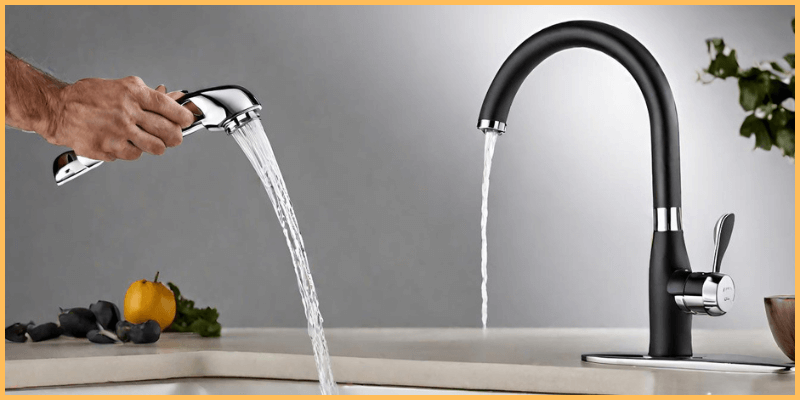
Historical Evolution of Kitchen Faucets
The Journey from Manual to Automation
kitchen water access was manual and labor-intensive, often involving separate hot and cold water spouts. The revolutionary introduction of mixed faucets in the early 20th century allowed for more control over water temperature and flow, setting the stage for future innovations.
In the subsequent decades, we have witnessed the advent of single-handle faucets, offering easier control and sleeker designs, reflecting the growing importance of aesthetics in kitchen appliances.
However, introducing touch and touchless technology in the 21st century marked a significant leap forward.
These innovations were driven by a growing awareness of hygiene and the desire for more efficient water use, which was spurred by environmental concerns.
Today’s touchless kitchen faucets, sophisticated probes, and eco-friendly designs stand as the pinnacle of this evolutionary journey.
They represent the culmination of years of technological advancements and embody the modern kitchen’s transformation into a space where functionality, convenience, and sustainability coexist harmoniously.
The Mechanism Behind contactless faucet
The Advantages of Touchless Kitchen Tap Technology
Touchless kitchen faucets introduce a wealth of advantages that cater to the modern homeowner’s needs for convenience, hygiene, and environmental responsibility.
One of the defining benefits is the significant reduction in cross-contamination. Since users don’t need to touch the faucet’s handles with dirty or germy hands, the spread of bacteria and viruses is notably minimized, making these faucets a hygienic choice for any kitchen.
Furthermore, the efficiency of motion-monitor faucets in water use cannot be overstated. By dispensing water only when needed and shutting off automatically, these faucets contribute to a household’s water conservation efforts, aligning with contemporary environmental sustainability goals.
This efficiency is particularly beneficial in kitchens where water is frequently used, ensuring that every drop counts towards a greener planet.
Additionally, the convenience offered by touchless technology enhances the kitchen experience. Simple gestures can activate the water flow, allowing for easy use during cooking or cleaning, especially when hands are full or soiled.
This hands-free operation also adds a level of accessibility and ease that is appreciated by all family members, including those with mobility challenges.
By merging hygiene, conservation, and convenience, touchless kitchen faucets are a wise investment for those looking to modernize their kitchen space while contributing positively to global sustainability efforts.
Comparative Analysis: Touchless vs. ordinary faucet
Several unique aspects of touchless technology become apparent compared to conventional taps, illustrating its distinct advantages in the modern kitchen. Firstly, gauge faucets are unmatched in operational efficiency.
They are designed to minimize water wastage by activating flow based on precise hand movements, offering substantial water savings over time.
This is in contrast to standard fixtures, which may inadvertently contribute to higher water consumption due to their manual operation, which does not automatically regulate the duration or stop the water flow.
Secondly, the hygiene benefits provided by hands-free faucets offer a significant upgrade over traditional models.
Contactless faucets reduce the risk of cross-contamination by eliminating the need to physically touch the water outlet handles, which can harbor bacteria and viruses. This promotes a healthier and safer kitchen environment.
Conversely, classic faucets require physical contact for operation, making them less ideal from a hygiene perspective, especially during flu season or when preparing food.
Finally, the motion-detector faucet brings the kitchen a futuristic aesthetic and convenience. Equipped with the latest probe technology, it responds to hand movements, simplifying tasks such as filling pots or washing hands.
Traditional water taps, with their more conventional operation and appearance, cannot replicate this blend of functionality and sleek design.
Thus, hands-free faucets elevate the kitchen’s visual appeal and usability, catering to the modern homeowner’s desire for a stylish and intelligent kitchen.
Benefits of hands-free kitchen faucet
Enhanced Water Efficiency
One of the standout benefits of motion-activated kitchen faucets is their remarkable water efficiency. With monitor-driven mechanisms, these faucets ensure water only runs when truly needed, eliminating unnecessary waste often seen with traditional taps.
This precise control over water use aligns with environmental sustainability efforts and translates to significant savings on water bills.
The automatic shut-off feature further ensures that water isn’t left running inadvertently, making touchless faucets an intelligent choice for conscientious households aiming to reduce their ecological footprint and promote water conservation.
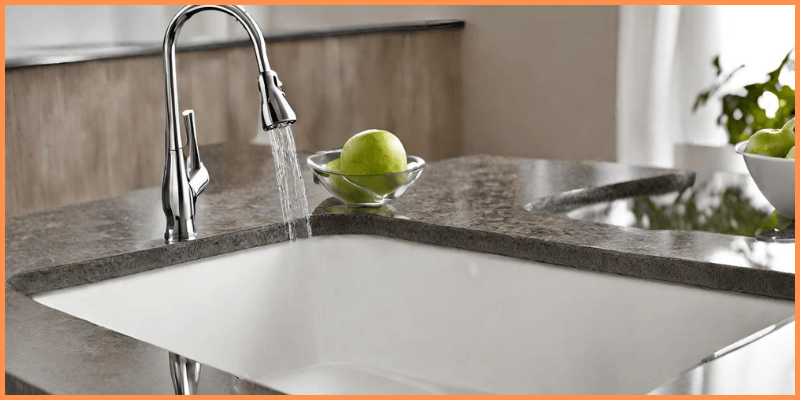
Potential Drawbacks and Considerations
While detector kitchen faucets offer numerous benefits, potential drawbacks and considerations should also be acknowledged.
One notable concern is their reliance on electricity or batteries for operation, which poses a risk of malfunction in the event of a power failure or depleted batteries. This can lead to temporary inconvenience and the need for periodic maintenance checks and replacements.
Additionally, the initial installation cost for touchless faucets is typically higher than that of ordinary faucets, primarily due to the sophisticated technology involved. Consumers should weigh these costs against the long-term water and hygiene benefits they offer.
There’s also the complexity of installation and the potential need for professional assistance, which can add to the overall expense.
Furthermore, while the sensors are designed for convenience, accidental activation or deactivation by unintended movements can occasionally occur, potentially leading to frustration or water waste.
Understanding these potential limitations is crucial for homeowners considering upgrading touchless kitchen valve technology.
Consumer Testimonials and Case Studies
One of the most compelling endorsements of hands-free kitchen faucets comes directly from users.
In a recent case study, a family in Oregon reported a nearly 30% reduction in their monthly water bill after installing a touchless pour in their home kitchen.
The family praised the cost savings and the added hygiene benefits, noting a decrease in the spread of colds and flu within their household.
Another testimonial comes from a busy restaurant owner in New York City, who observed a significant improvement in kitchen efficiency and cleanliness after transitioning to touchless faucets.
The convenience of quick and easy handwashing encouraged more frequent hygiene practices among staff, contributing to a healthier work environment and, ultimately, higher customer satisfaction.
These real-world examples underscore the tangible benefits automatic kitchen faucets bring to both homes and commercial settings.
The combination of water efficiency, improved hygiene, and enhanced convenience supports individual well-being and environmental sustainability efforts and provides financial savings over time.
Future Trends in Kitchen Faucet Technology
As we look to the future, kitchen spigot technology is poised for even more innovative advancements.
Developments such as AI integration promise to make faucets more intuitive, enabling them to adjust water temperature and flow based on learned user preferences and activities.
Brilliant faucets might also integrate with home automation systems, allowing for voice-controlled operation and alerts for leaks or water consumption overages.
Additionally, we may see the incorporation of water purification systems directly within the tap,
These advancements will further enhance kitchen tasks’ convenience, efficiency, and safety, redefining our interaction with one of the home’s most fundamental fixtures.
Making the Switch: Installation and Transition Guide
Switching to a touchless kitchen water outlet is a significant upgrade that can transform your kitchen’s functionality and design. An installation and transition guide is tailored for homeowners to facilitate a smooth transition.
Choose the Right Model: Research various models to find one that suits your kitchen’s aesthetic and functional needs. Consider factors like finish, sensor accuracy, and battery vs. AC power.
Prepare for Installation
Before installation, ensure you have all necessary tools on hand. This might include adjustable wrenches, pliers, a screwdriver, and Teflon tape. Also, remember to shut off the water supply to avoid mishaps.
Follow the Manufacturer’s Instructions: Each valve model has unique installation instructions. Carefully follow these steps, which typically involve mounting the stream, connecting it to water supply lines, and setting up the power source for the sensors.
Test the Faucet
Once installed, turn the water supply back on and test the tap to ensure it functions correctly. Pay attention to the sensor’s responsiveness and check for any leaks.
Adjust Settings as Necessary
Some touchless faucets allow for customization of settings, such as the sensor’s sensitivity or the water temperature, and preferences for automatic activation. Take the time to adjust these to your preference.
Educate Your Household
If you live with others, ensure they know how to operate the new water outlet. This includes understanding how to activate the water flow and any other special features your valve may have.
You are enhancing your kitchen’s convenience, hygiene, and overall appeal.
Conclusion
Reflecting on my experience with upgrading to a touchless kitchen fixture, I’ve noted a palpable shift in how my kitchen functions.
It’s not just about the significant water savings or the increased hygiene, which is more crucial than ever.
It’s about the seamless blend of technology and daily life—a reminder that sometimes, the smallest changes make the biggest differences.
The convenience of not having to manually turn the tap on and off, especially when my hands are full or dirty, has transformed my cooking routines, making them more efficient and enjoyable.
I’ve also become more conscious of water usage, an unexpected but welcome change in behavior that aligns with my growing commitment to sustainability.
The benefits of no-touch kitchen faucets extend beyond the obvious, embedding themselves into the fabric.
FAQs
Should I buy a touchless kitchen water outlet?
Investing in a touchless kitchen spigot is highly recommended for enhanced hygiene, convenience, and water conservation.
What is the new trend in kitchen faucets?
The newest trend in kitchen faucets is integrating innovative technology, offering features like voice control, water monitoring, and personalized settings.
How long do motion-activated kitchen faucets last?
Sensor kitchen faucets, with proper maintenance, can last 5 to 10 years on average.
What is the best Delta kitchen emit 2024?
The best Delta kitchen tap of 2024 is the Delta Leland Touch2O model, known for its ease of use, durability, and intelligent features.

